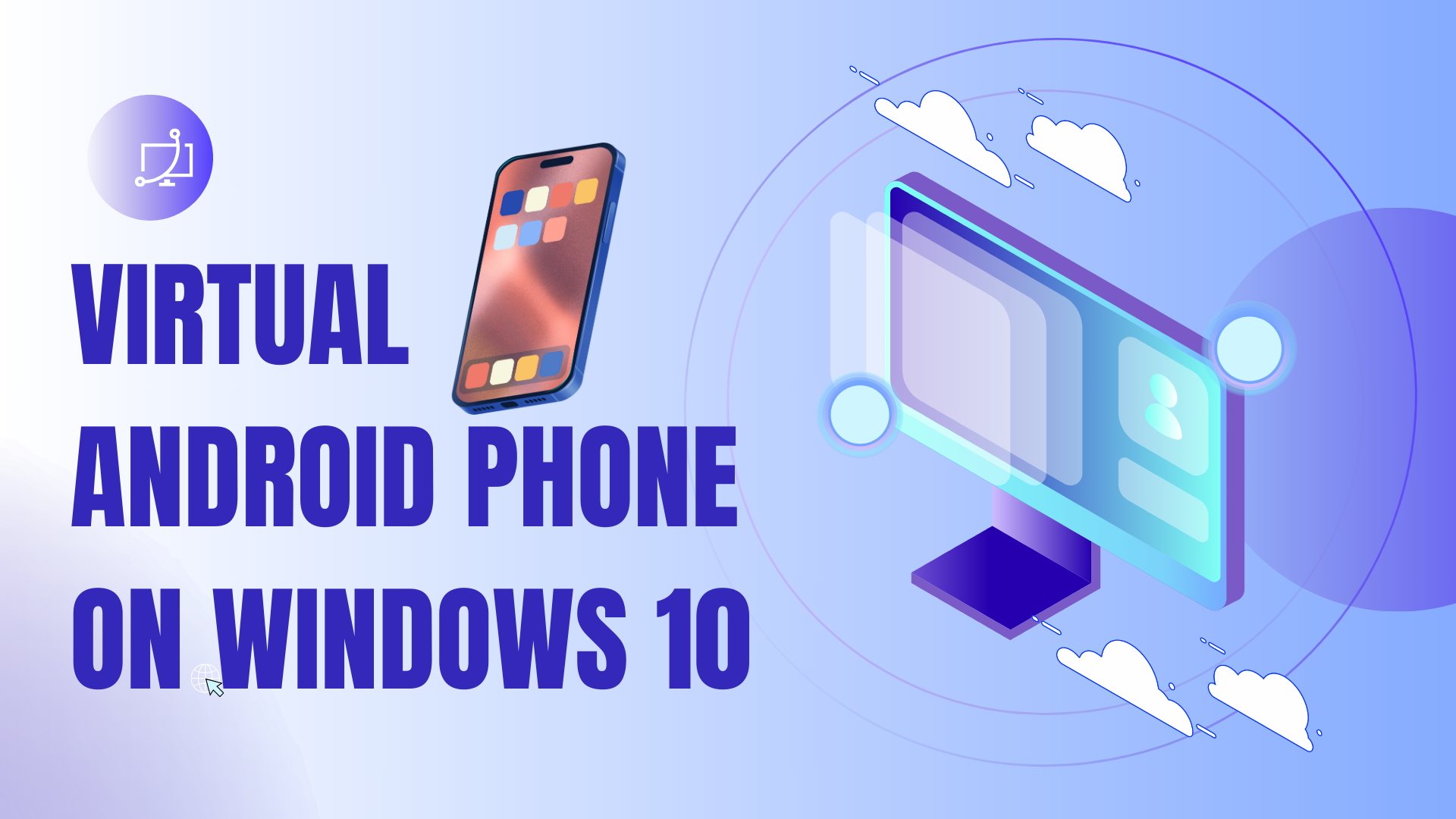How to Run a Virtual Android Phone on Windows 10: Step-by-Step Guide

In contemporary computing landscapes, the ability to execute Android applications within a Windows 10 ecosystem has gained significant traction. This necessity extends across multiple domains, including software development, quality assurance, and gaming.
System Requirements
Before installing an emulator, ensure your system meets these requirements:
- Windows 10 (64-bit, build 1803 or later)
- At least 4GB RAM (8GB+ recommended)
- Intel VT-x or AMD-V enabled in BIOS (virtualization)
- Multi-core processor for multitasking
- 10GB+ free disk space
- Updated graphics drivers
Pro Tip: Check virtualization status in Task Manager → Performance → CPU tab. If disabled, enable it in your system BIOS/UEFI.
Popular Android Emulators (2025)
| Emulator | Best For | Notable Features | Platforms |
|---|---|---|---|
| BlueStacks | Gaming | Play Store, advanced controls, multi-instance, sync | Windows, macOS |
| NoxPlayer | Gaming & scripting | Macro recorder, multiple instances, mapping tools | Windows, macOS |
| LDPlayer | Lightweight multitasking | Optimized performance, regular updates | Windows |
| MEmu Play | Versatility | Intel/AMD support, flexible controls, multi-instance | Windows |
| Genymotion | Professional testing | Device/OS variety, desktop & cloud support | Windows, macOS, Linux |
| Android Studio AVD | Developers | Official Google emulator, deep IDE integration | Windows, macOS, Linux |
How Android Emulators Work
Emulators rely on virtualization technology to simulate hardware (CPU, memory, GPU, sensors). They use tools like QEMU for instruction translation and support hardware acceleration via Intel HAXM or AMD Hypervisor, ensuring smoother performance.
Step-by-Step Guide: Running a Virtual Android Phone
Option 1: Android Studio Emulator (Best for Developers)
- Install Android Studio
- Download from the official Android Studio site
- Ensure “Android Virtual Device (AVD)” is included in setup
- Install Emulator Component
- Android Studio → SDK Manager → SDK Tools → Android Emulator
- Enable Virtualization
- Enter BIOS/UEFI → Enable Intel VT-x or AMD-V
- Create a Virtual Device
- → Device Manager → Create Device
- Choose a profile (e.g., Pixel 6) → Select x86/x86_64 image
- Launch the Emulator
- Start device from AVD Manager
- Sign in with Google account or sideload APKs
- Save State with Snapshots
- Quickly return to specific test environments
Option 2: Third-Party Emulators (Best for Gaming & Productivity)
BlueStacks
- Download from official website → Install → Sign in with Google account
- Access Play Store, use keyboard/mouse mapping, and enable multi-instance
NoxPlayer / LDPlayer / MEmu
- Similar installation process
- Optimized for gaming, multi-instance, and smooth performance
- MEmu supports both Intel and AMD processors
Important: Always download from official sites to avoid malware.
For a complete roundup of the best emulators and simulators, visit our master guide: here
Implementation of Android Virtualization Using Android Studio
Step 1: Installing Android Studio
- Download the Installer: Access the official Android Studio repository and retrieve the latest Windows-compatible version.
- Execute Installation: Launch the installer and adhere to the guided setup process.
Step 2: Activating Hardware Virtualization
To enhance emulator efficiency, it is imperative to confirm and activate virtualization support:
- Verification: Execute
systeminfovia Command Prompt and locate the "Hyper-V - Virtualization Enabled In Firmware" parameter. - Enabling Hyper-V and Windows Hypervisor Platform:
- Navigate to Windows Features from the Start menu.
- Activate Hyper-V and Windows Hypervisor Platform.
- Confirm changes and initiate a system reboot.
Step 3: Configuring a Virtual Device
- Access AVD Manager: Launch Android Studio and locate the AVD Manager under the Tools menu.
- Create a New Virtual Device:
- Select a predefined hardware configuration (e.g., Pixel 4).
- Allocate an appropriate system image (e.g., Android 11).
- Finalize the setup.
Step 4: Executing the Virtualized Android Instance
- Launch the Emulator: Select the virtualized device from AVD Manager and initiate the emulation process.
- Optimize Configuration: Adjust parameters including display resolution, orientation, and network emulation settings.
Deployment via GameLoop
Step 1: Installation Protocol
- Download GameLoop: Retrieve the latest build from the official distribution channel.
- Execute Installation: Follow the automated installation process.
Step 2: Emulator Initialization
- Launch GameLoop: Activate the application from the Start menu.
- Authenticate via Google Account: Required for accessing Google Play services.
Step 3: Application Deployment
- Navigate to Google Play Store: Access the Play Store from within GameLoop.
- Install and Execute Applications: Search for and install the required Android applications.
Optimization Strategies for Enhanced Performance
- Enable Virtualization: Ensure Hyper-V is active to reduce overhead.
- Upgrade Graphics Drivers: Utilize the latest GPU drivers to mitigate rendering latency.
- Allocate Dedicated RAM: Assign sufficient memory resources to improve runtime efficiency.
- Select an Optimal Emulator: Align the emulator choice with usage requirements (e.g., GameLoop for gaming, Android Studio for development).
Security Considerations
While emulators present a viable mechanism for Android application execution on Windows 10, several security challenges must be addressed:
- Data Privacy: User credentials stored within the emulator environment should be protected against unauthorized access.
- Application Security: Restrict installations to verified sources such as the Google Play Store.
- Software Integrity: Maintain up-to-date emulator versions to prevent security vulnerabilities.
Constraints
Despite their utility, Android emulators exhibit inherent limitations:
- Computational Overhead: Emulation imposes substantial processing demands, impacting performance on lower-tier hardware.
- Compatibility Issues: Certain applications may exhibit instability or limited functionality.
- Lack of Sensor Integration: Physical sensor emulation (e.g., GPS, accelerometers) remains a challenge.
Conclusion
The deployment of a virtual Android environment on Windows 10 presents a robust solution for developers, testers, and gamers alike. By selecting an emulator that aligns with operational requirements and employing optimization strategies, users can effectively simulate the Android ecosystem within a Windows framework.